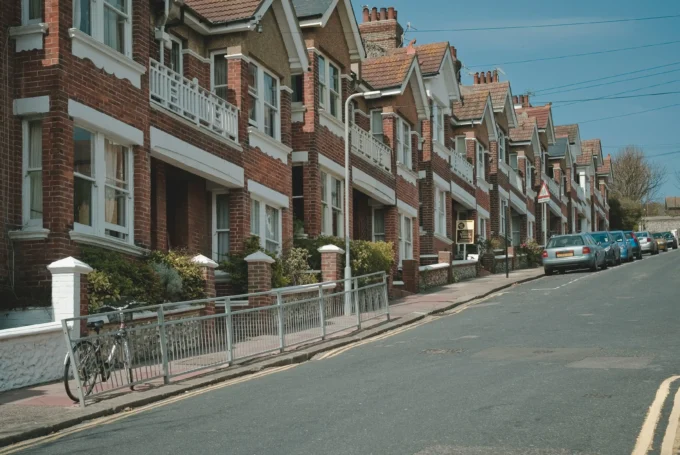- Home
- Articles
- Architectural Portfolio
- Architectral Presentation
- Inspirational Stories
- Architecture News
- Visualization
- BIM Industry
- Facade Design
- Parametric Design
- Career
- Landscape Architecture
- Construction
- Artificial Intelligence
- Sketching
- Design Softwares
- Diagrams
- Writing
- Architectural Tips
- Sustainability
- Courses
- Concept
- Technology
- History & Heritage
- Future of Architecture
- Guides & How-To
- Art & Culture
- Projects
- Interior Design
- Competitions
- Jobs
- Store
- Tools
- More
- Home
- Articles
- Architectural Portfolio
- Architectral Presentation
- Inspirational Stories
- Architecture News
- Visualization
- BIM Industry
- Facade Design
- Parametric Design
- Career
- Landscape Architecture
- Construction
- Artificial Intelligence
- Sketching
- Design Softwares
- Diagrams
- Writing
- Architectural Tips
- Sustainability
- Courses
- Concept
- Technology
- History & Heritage
- Future of Architecture
- Guides & How-To
- Art & Culture
- Projects
- Interior Design
- Competitions
- Jobs
- Store
- Tools
- More
Revolutionizing Building: The Future of 3D Construction Methods

The realm of architecture and construction is on the cusp of a transformative revolution, thanks to the advent of 3D construction methods. This innovative approach is not just a fleeting trend but a robust solution that promises to redefine the future of building, making it more efficient, sustainable, and imaginative. As we delve into the intricacies of 3D construction methods, it becomes clear that we are witnessing the dawn of a new era in the construction industry.

Table of Contents
ToggleThe Genesis of 3D Construction
3D construction, or 3D printing in construction, is a technique that uses computer-controlled machines to fabricate buildings or their components layer by layer from materials such as concrete, plastic, or metal. This method has evolved from the realms of experimental projects to practical applications, showcasing its potential to significantly impact the construction industry. The genesis of 3D construction can be traced back to the early 2000s, but it’s in the last decade that we’ve seen its true potential unfold, driven by advancements in technology and a growing awareness of its benefits.
The Benefits of 3D Construction
The advantages of 3D construction are manifold. Firstly, it offers unprecedented design flexibility. Architects and designers are no longer constrained by traditional construction methods and materials, enabling the creation of unique, complex structures that were previously considered impractical or too costly. This opens up new avenues for innovation in architectural design, allowing for more organic, fluid shapes and structures that blend harmoniously with their environment.

Secondly, 3D construction significantly reduces waste. Traditional construction methods are notorious for the high levels of material waste they produce. In contrast, 3D printing in construction allows for precise control over the amount of material used, dramatically reducing excess and contributing to more sustainable building practices.
Moreover, 3D construction methods can lead to faster construction times. Automated printing processes can work around the clock, drastically cutting down the time required to build a structure. This efficiency not only saves time but also reduces labor costs and the potential for human error, leading to safer construction sites.
Real-world Applications and Challenges
The practical applications of 3D construction are already visible around the globe. From residential homes and commercial buildings to bridges and even entire communities, 3D printing is making its mark. For instance, in Eindhoven, the Netherlands, the world’s first 3D-printed concrete bridge was opened in 2017, showcasing the practical applications and durability of 3D construction methods.

Despite its promising benefits, 3D construction faces several challenges. One of the main hurdles is regulatory approval. Building codes and standards were established long before the advent of 3D printing, making it difficult for 3D-printed structures to gain approval due to the lack of specific guidelines. Additionally, there’s a need for more skilled professionals who are trained in these new technologies, from operating the machines to designing for 3D printing.
The Future is Now
Looking ahead, the future of 3D construction methods is bright. As technology continues to advance, we can expect to see more sophisticated 3D printers capable of working with a broader range of materials, further expanding the possibilities of what can be built. Moreover, as awareness of its benefits grows, so too will the push for regulatory frameworks that can accommodate this new way of building.

In conclusion, 3D construction methods are revolutionizing the building industry. They offer a more sustainable, efficient, and creative approach to construction that promises to reshape our built environment. While challenges remain, the potential of 3D construction is undeniable. As we move forward, embracing these innovative techniques will be key to building a more sustainable, efficient, and imaginative world. The revolution in building is here, and it is being built one layer at a time.
Submit your architectural projects
Follow these steps for submission your project. Submission FormLatest Posts
Key Features to Look for When Investing in Construction AI Cameras
Continuous monitoring is crucial on construction sites for effective accident prevention. Artificial...
Why Legal Support Is Critical After a Serious Construction Accident
If you are dealing with a construction accident or have ever watched...
7 Common Myths Every Contractor Should Stop Believing
The construction landscape is a complicated place at the best of times,...
Automation in Construction: Why Human Safety Still Matters
Automation in construction can cut injuries, but new risks emerge. Learn practical...












Leave a comment